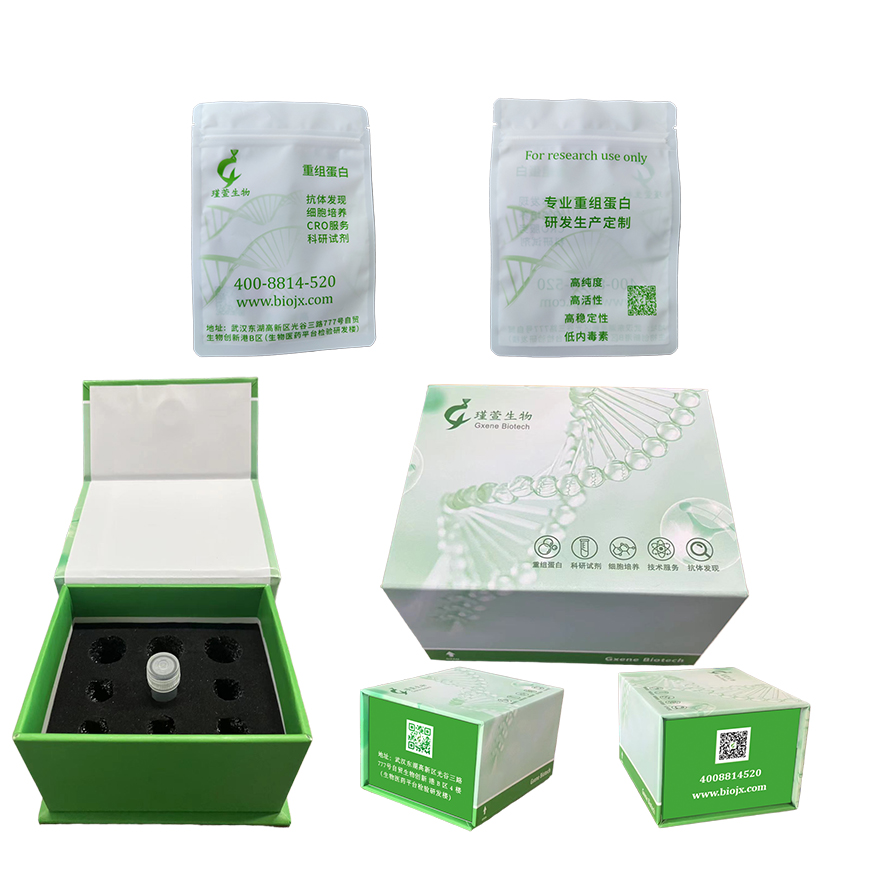研究方向
Ephrin-A4/EFNA4 蛋白是一种细胞表面 GPI 结合配体,可与 Eph 受体(对神经元、血管和上皮发育至关重要的受体酪氨酸激酶家族)相互作用,从而实现迁移、排斥和粘附。它与邻近细胞上的 Eph 受体混杂结合,启动接触依赖性双向信号传导。此外,Ephrin-A4/EFNA4 蛋白可能有助于扁桃体中活化的 B 淋巴细胞和树突状细胞之间的相互作用。
内毒素
< 0.1 EU/μg of the protein by LAL method.
制剂
Lyophilized from a 0.22 μm filtered solution of PBS, pH 7.4.Contact us for customized product form or formulation.
描述
Recombinant Human Ephrin-B1/EFNB1 Protein is produced by HEK293 expression system. The target protein is expressed with sequence (Leu 28 - Gly 232 ) of human Ephrin-B1 (Accession #NP_004420.1) fused with a 6×His tag at the C-terminus.
储存
Store at -20℃.Store the lyophilized protein at -20℃ to -80 ℃ up to 1 year from the date of receipt.
After reconstitution, the protein solution is stable at -20℃ for 3 months, at 2-8℃ for up to 1 week.未开盖的干粉蛋白在 -20°C至-80°C可保存12个月;
复溶之后,蛋白溶液在-20°C及以下可保存3个月,在2-8℃可保存1周。
生物活性
Measured by its binding ability in a functional ELISA. Immobilized Human EFNB1 at 0.5 μg/mL (100 μL/well) can bind Mouse EPHB3 with a linear range of 0.1-3.5 ng/mL.
复溶
Centrifuge the vial before opening. Reconstitute to a concentration of 0.1-0.5 mg/mL in sterile distilled water. Avoid vortex or vigorously pipetting the protein. For long term storage, it is recommended to add a carrier protein or stablizer (e.g. 0.1% BSA, 5% HSA, 10% FBS or 5% Trehalose), and aliquot the reconstituted protein solution to minimize free-thaw cycles.收到重组蛋白产品之后请检查蛋白冻干粉末是否贴于瓶底,如果粉末浮起,开盖之前请先低温离心。将蛋白用说明书中指定的缓冲液复溶至0.1-0.5 mg/mL(请注意蛋白复溶浓度不能低于0.1 mg/mL),室温平衡5-10 min保证充分溶解,复溶过程中请不要剧烈涡旋及吹打蛋白溶液。如需长期储存,建议复溶时添加载体蛋白或者稳定剂(如0.1% BSA, 5% HSA, 10% FBS 或者 5% 海藻糖),同时将复溶后的蛋白溶液按照需求进行分装,储存于-20°C至-80°C,随取随用,避免反复冻融。
背景信息
Ephrin-B1 also known as EFNB1, is a member of the ephrin family. The transmembrane- associated ephrin ligands and their Eph family of receptor tyrosine kinases are expressed by cells of the SVZ. Eph/ephrin interactions are implicated in axon guidance, neural crest cell migration, establishment of segmental boundaries, and formation of angiogenic capillary plexi. Eph receptors and ephrins are divided into two subclasses, A and B, based on binding specificities. Ephrin subclasses are further distinguished by their mode of attachment to the plasma membrane: ephrin-A ligands bind EphA receptors and are anchored to the plasma membrane via a glycosylphosphatidylinositol (GPI) linkage, whereas ephrin-B ligands bind EphB receptors and are anchored via a transmembrane domain. An exception is the EphA4 receptor, which binds both subclasses of ephrins.
别名
EFNB1;CFND;CFNS;EFB1;EFL3;EPLG2;Elk-L;LERK2;ephrin-B1

